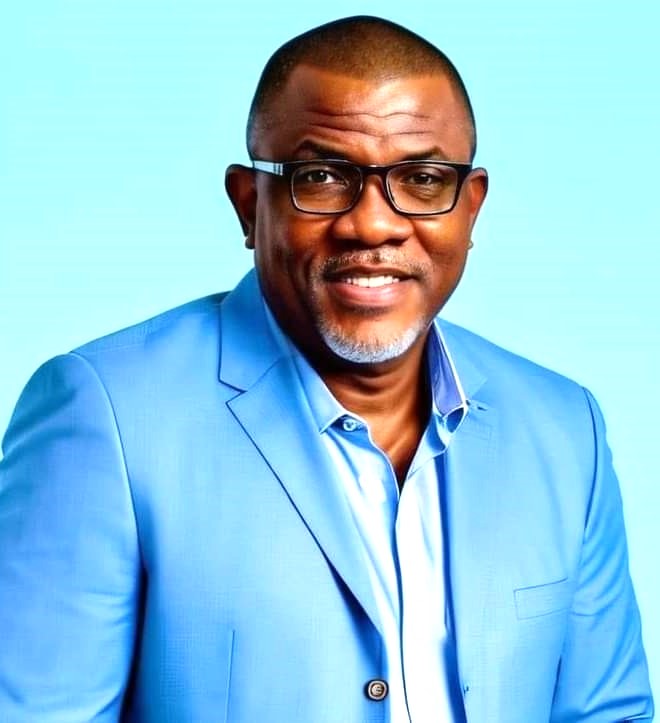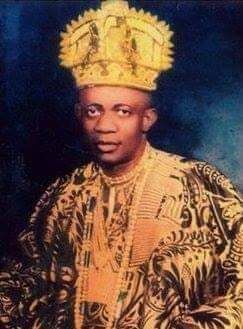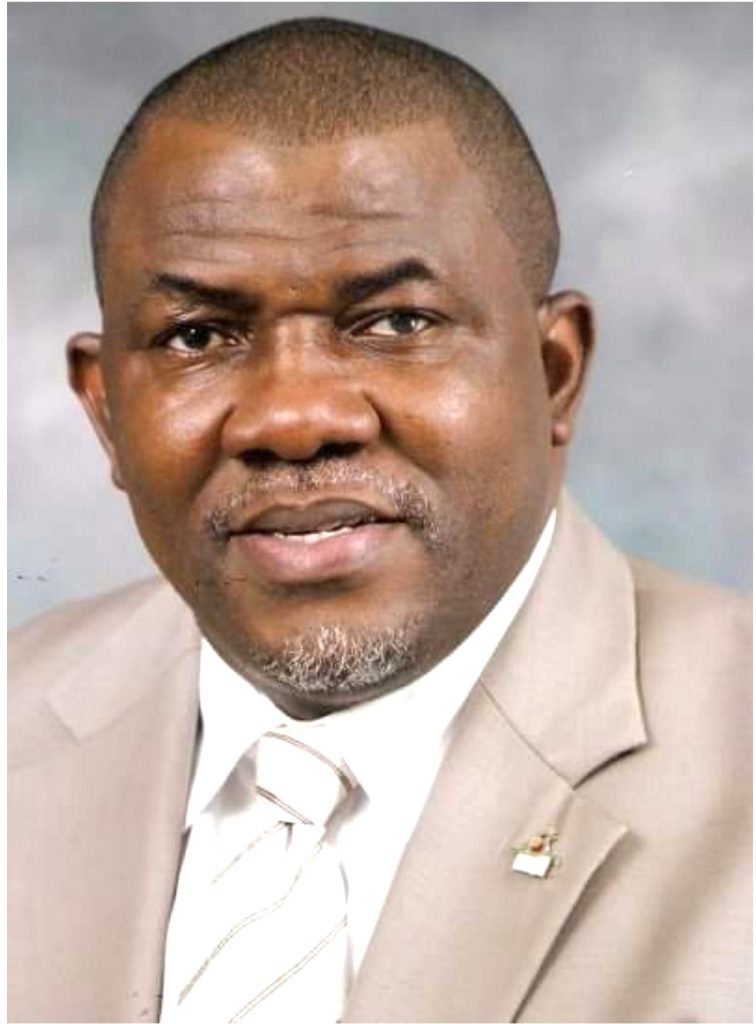‘Oba Fadina Centre committed to Awori arts, culture, history, says Awori Tourism boss
Posted on: November 16, 2024, by : uguru okoriePrince Oluwafemi Fadina, a destination management expert and Managing Director of Dinat Consulting and also the force behind Dinat Vocational Institute, with focus on tourism and hospitality certification, has over the years evolved with commitment to developing and promoting Aworiland tourism through Awori Tourism platform. He spoke with OKORIE UGURU on his journey of enthroning Aworiland tourism, as he is presently engaged in the building of Oba Timothy Oloyede Fadina Centre for Awori Art, Culture and History, as a legacy project

Prince Femi Fadina
What inspired the setting up of Oba Timothy Oloyede Fadina Centre for Awori Art, Culture and History?
The inspiration behind the Oba Timothy Oloyede Fadina Centre for Awori Art, Culture, and History is deeply personal and strategic. It is rooted in a vision to authentically preserving and celebrating the uniqueness of the Awori heritage-a legacy that dates back to the early 1990s.
I vividly remember sitting with my father, before his passing, (March 15, 1993), holding his hand and hearing his final words. Those moments have stayed with me, shaping my drive to create a place where our history, culture, and values are honoured and passed on.

The late Oba Timothy Oloyede Fadina
The idea of the museum draws from the lessons learned in cultural preservation efforts in South Africa and Gambia, where heritage has been preserved and celebrated with immense pride.
The centre is designed not just to house artifacts, but to educate, inspire, and immerse future generations in the rich tapestry of the Awori people’s journey. This museum is a living tribute to our culture, built to be a lasting legacy that instills a sense of pride and connection to our history.
Since unveiling Vision 2030 on October 19, 2019, every step has been methodically aligned with the comprehensive 400-page Awori Tourism Development Plan, ensuring that every initiative contributes to a sustainable future.
Awori Day Cultural Festival 2022, for example, was a pivotal moment in unifying the Awori communities of Lagos and Ogun states, reinforcing our commitment to self-narration and cultural ownership. Similarly, Iganmode 2021 has emerged as a distinctive brand with boundless potential, which we must nurture and preserve, ensuring its cultural richness is not lost in the passage of time.
At its core, the centre stands as a tribute to my father, Oba Timothy Oloyede Fadina. It is my desire to honour his legacy while securing the future of Awori culture for generations to come. This museum is a deliberate, long-term investment in our people’s cultural future; one that will resonate, inspire, and endure for years to come, ensuring that the essence of Awori heritage is never forgotten.
What would be its focus in terms of its materials?
With a deep commitment to tourism development, the Oba Timothy Oloyede Fadina Centre for Awori Art, Culture, and History will focus on curating a rich, authentic tapestry of Awori heritage that celebrates the past, present, and future of Aworiland.
Our materials will centre on invaluable contributions from elders, aged 89 and above, respected historians, traditional rulers’ materials, and the Awori communities. The centre will also collaborate with international libraries to expand its reach and offer a wealth of historical resources.
Visitors will experience an extensive collection of historical artifacts, alongside traditional and contemporary Awori paintings that celebrate the achievements of our distinguished sons and daughters. Each piece will serve as a testament to the vibrant legacy of Aworiland. Awori songs like Agasha, deeply rooted in cultural storytelling, will echo through the halls, animating the history and spirit of the Awori people.
Beyond preservation, the centre is dedicated to providing an immersive experience. Members of the esteemed or Iba society will enjoy an exclusive lounge, while all visitors can savour Awori-inspired cuisine at our café, featuring authentic flavours and culinary traditions that offer a true taste of Awori life. This centre will not only be a place to learn but a dynamic experience of Awori heritage in all its richness.
How suitable is Ota for such a facility?
Ota stands out as an ideal location for this visionary project. With its historic roots dating back to 300 BC, Ota holds a unique and compelling story that resonates deeply with both heritage seekers and modern tourists. Here in Ota is the Nigeria’s second-story building and the world’s largest church (Winners Chapel – Canaanland).
Ota is already a place of significance, setting a strong foundation for establishing it as a destination for Meetings, Incentives, Conferences, and Exhibitions (MICE), alongside rich cultural products. From a brand perspective, Awori Tourism positions Ota as a future-oriented destination that respects its history while embracing global tourism trends. The parallels to the development of Las Vegas are insightful; just as Las Vegas transformed its community economy through strategic tourism.
Dubai in the 1960s and 1974 was a desert, now turned into magnificent story on tourism development. Ota has the same texture by promoting a dynamic, community-centred tourism economy.
I also believe, Ota’s proximity to Lagos is a strategic advantage we plan to capitalise on, opening doors for easy access by regional and international visitors. Former President Olusegun Obasanjo’s emphasis on leadership in business tourism aligns with this vision, as Ota has the potential to become a business and cultural hub.
The Awori Tourism development plan isn’t just about preserving culture; it’s about driving growth, creating memorable experiences, and building a destination that embodies the Awori brand’s resilience, heritage, and future-focused outlook.
Who are the support and funding base this legacy project?
The support and funding for the Oba Timothy Oloyede Fadina Centre for Awori Art, Culture, and History come entirely from a place of faith and conviction. My experience in Gambia development and the content I see in Dubai, South Africa gave me an unwavering belief and the strength of purpose, driven 100% by God’s grace and mercy. Despite challenges with conventional financial institutions, this project moves forward with deep dedication, reflecting a commitment that transcends traditional support and embodies a spirit of resilience and vision.
What does the future holds for the museum?
The future of the Oba Timothy Oloyede Fadina Centre for Awori Art, Culture, and History is rich with potential for growth and impact. As it becomes a beloved symbol of Awori heritage, the museum will increasingly reflect a sense of community ownership, with locals and stakeholders seeing it as a collective legacy to be cherished and sustained.
This community involvement will strengthen its foundation, creating a space that resonates deeply with the Awori people and attracts both national and international visitors. Globally, the centre will serve as a beacon of cultural pride, attracting tourists, researchers, and culture enthusiasts, and positioning Awori heritage within the larger tapestry of world history. It is set to become an inspiring model of cultural preservation and pride, with acceptance and admiration that transcends borders and connects the Awori story with audiences worldwide.
Centre of this magnitude are intensive, time and fund consuming to manage, how prepared are you for this journey?
I am fully aware that establishing and sustaining a museum is a long-term journey, requiring dedication, time, and resources. As an art collector, I’ve cultivated a deep appreciation for preserving history and culture, which strengthens my commitment to this project.
My experiences; like my destination wedding in Gambia, where I witnessed the economic impact of hosting 457 guests, and organising the Nigerian Breweries Plc Finance Conference at La Campagne Tropicana Beach Resort, among others; have been invaluable learning moments. Observing the significant revenue that tourism can generate has fuelled my passion to redirect similar energy into Ota. Since 2007, I’ve been conducting Destination Evaluation visits to Ota, exploring the potential of its historical sites, like the 1842 second story building and the largest church. This journey is more than just a As an Awori Prince, a seasoned tourism consultant, and an art collector, I recognise that one of the major challenges in promoting Awori tourism has been a pervasive “instant milk” mindset; an expectation of immediate returns without regard for the long-term cultivation that cultural development demands.
This impatience can obstruct sustainable growth, as many do not see the broader vision that heritage preservation and tourism require. They seek quick gains rather than understanding that our true legacy lies in the slow, careful building of a foundation that future generations will appreciate.
Personally, I take a cross-generational perspective, understanding that the depth and richness of Awori content may take 50 to 100 years to be fully appreciated. The investments we make today; whether in preserving historical artifacts, documenting stories, or hosting cultural festivals; are gifts for our descendants.
In time, when our children and grandchildren grow into elders themselves, they will look back and recognise these initiatives as a significant part of Aworiland’s development, a foundation upon which they can stand proudly.
Awori Day celebrations have been a vital ‘learning curve’ for me, offering insights into the complexities of community engagement and the nuances of cultural preservation. These experiences remind me of the importance of patience, respect for tradition, and the need for a collective mindset that values heritage over immediate profit.
Every step we take is a lesson in understanding not only Aworiland but also the essence of life itself; appreciating that growth is a journey, and true value often emerges slowly, enriching those who have the foresight to nurture it.
How supportive has the state govt been in developing and promoting tourism in Ota?
The state government’s support in developing and promoting tourism in Ota has been a valuable blend of guidance, encouragement, and tangible action, each step taken with a deep understanding of our vision and the unique heritage of Aworiland.
I am especially grateful to my sister, our Deputy Governor, Engr. Noimot Salako Oyedele, who has been a steadfast ally from the unveiling of our initiatives to the present day. Her commitment goes beyond familial ties; she offers the invaluable perspective of an indigene coupled with the strategic insight of her role in government.
Her support, both personal and professional, has been instrumental in shaping our progress and has shown the power of leadership rooted in both heritage and forward-thinking.
In addition, each commissioner, from the administration of Senator Gbenga Daniel through to the current tenure of Governor Prince Dapo Abiodun, has offered vital support to our tourism development efforts. These leaders have recognised the importance of Ota’s cultural landscape and the potential it holds for the broader development of Ogun State. Their continued encouragement reflects a shared vision, one that understands that building a lasting cultural legacy requires both patience and partnership.
True support in a project of this scale requires more than policy; it requires an emotional investment, a deep understanding of the human spirit, and respect for the process of building something enduring. The state government has shown just that, fostering an environment that allows our initiatives to grow while offering a steady hand to guide our journey. I remain deeply grateful for this support, which strengthens our commitment to preserving and showcasing Awori heritage for generations to come.


